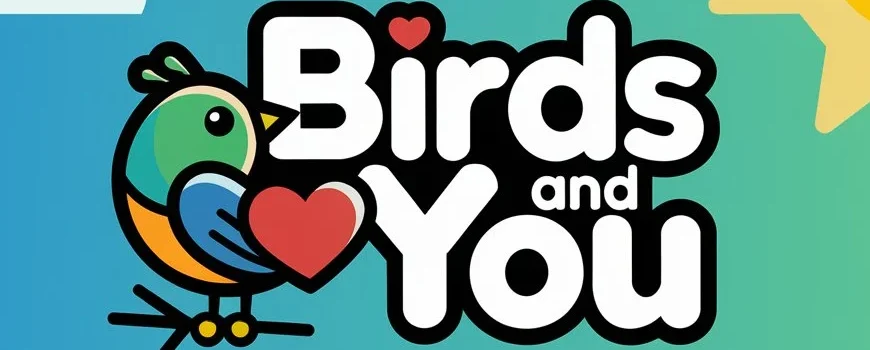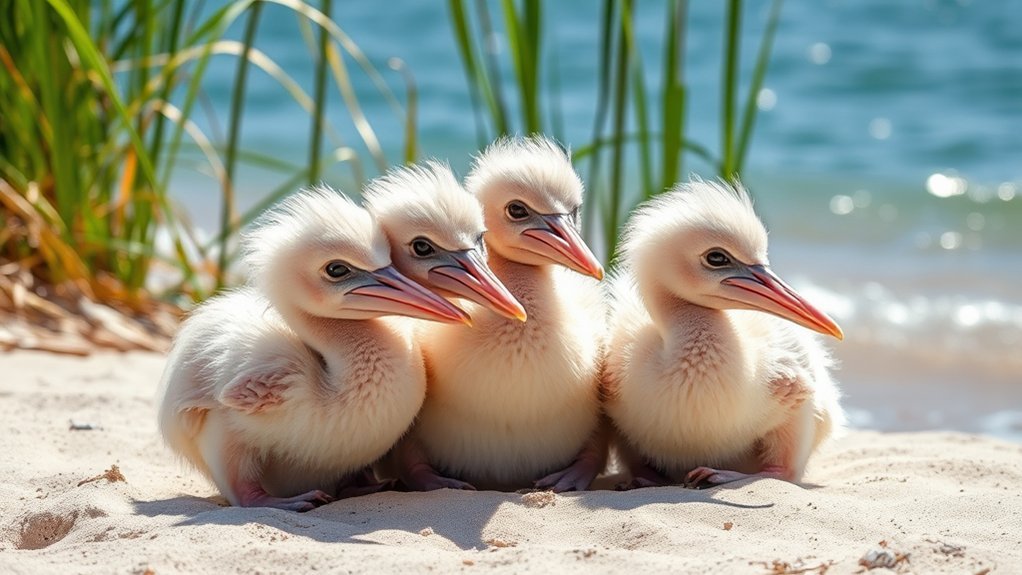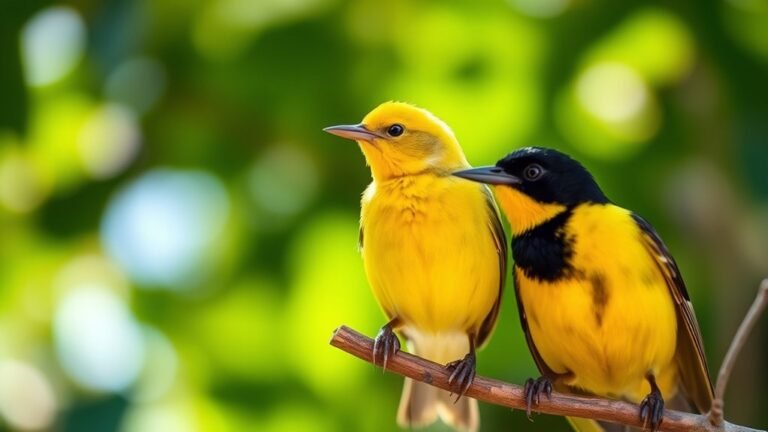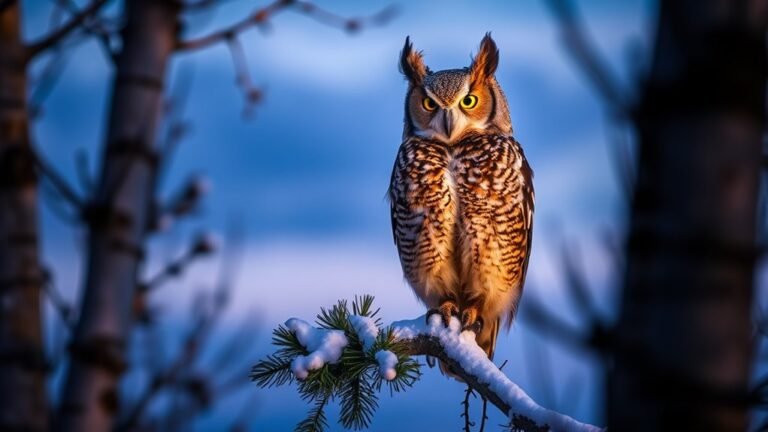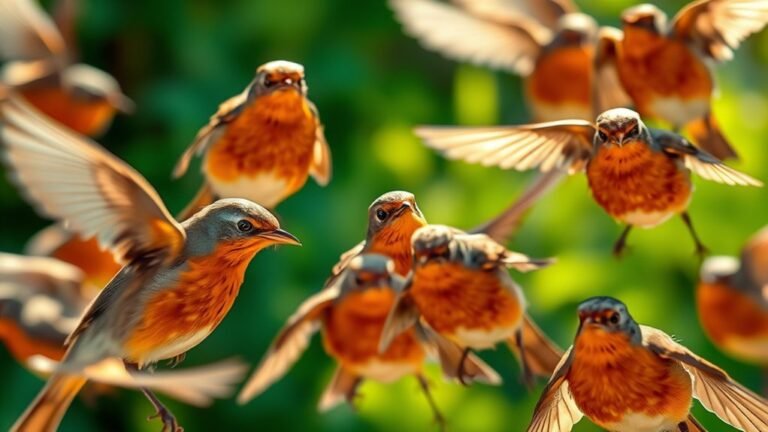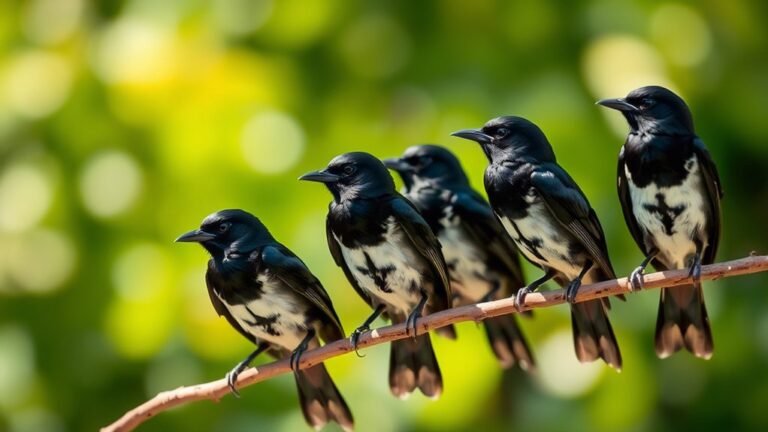Baby Pelicans: Facts and Characteristics
Baby pelicans, called poults, go through an exciting journey as they grow. They start as tiny hatchlings and depend on their parents for help. These young birds have special physical features and behaviors that help them as they develop.
Poults eat a lot of fish, which helps them grow strong. But feeding is just one part of their survival. They also face challenges as they learn to fly and find food on their own.
As they get older, baby pelicans must learn how to catch fish and avoid dangers. This shift from needing their parents to being independent is a big step for them. Understanding this growth helps us appreciate these amazing birds even more!
A Quick Overview
Baby pelicans are really interesting! They hatch from their eggs about 30 days after the eggs are laid. When they're ready, they peck their way out.
At first, baby pelicans have soft little beaks and gray feathers that help keep them warm. They mainly eat fish, and they learn how to catch them by watching their parents.
In the first few weeks, baby pelicans grow fast! They change from soft down feathers to juvenile feathers, and soon they will have flight feathers.
Baby pelicans like to live in groups, called colonies. They spend time together, preening each other and making sounds. This helps them build trust and learn how to survive. Watching them interact is really fun and shows just how social they are!
The Hatching Process of Baby Pelicans
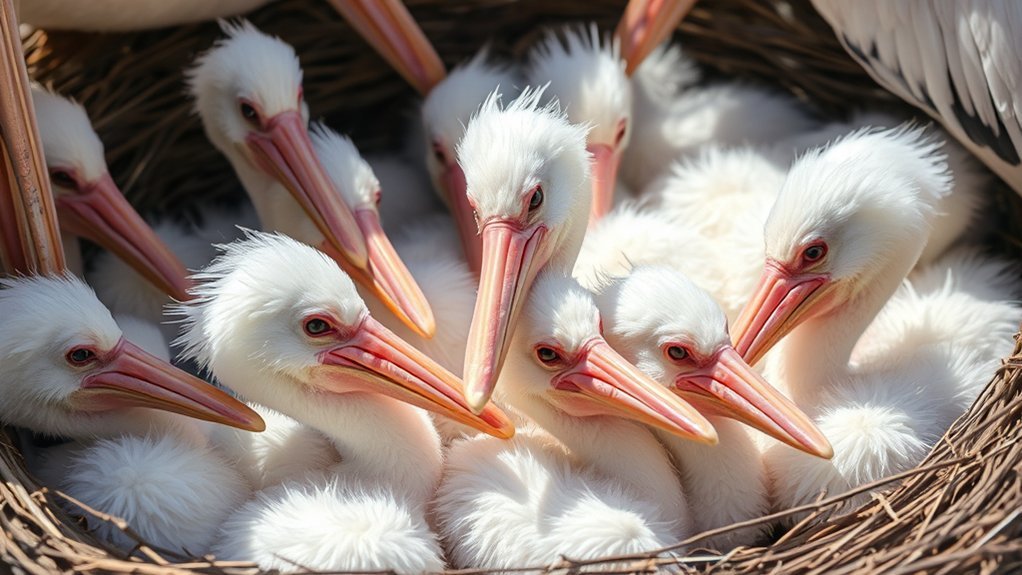
The hatching process for baby pelicans starts about 30 days after the parents lay their eggs. This time is very important. Both mom and dad pelican work together to keep the eggs warm and safe from danger.
As the days go by, the eggs begin to change. You can see the babies moving inside the eggs as they grow. When it's time to hatch, you'll notice the baby pelicans pecking their way out of the eggs. This is an exciting moment, as they begin their new lives.
The parents help each other during this time. Their teamwork not only makes sure the eggs hatch successfully but also prepares them for raising their little pelican family together.
It's a wonderful sight to see!
Physical Characteristics of Pelican Poults
Pelican poults look a bit funny at first, but they've important features that help them survive. One major part of their body is their beak. It starts off small and soft, but it grows quickly. As it gets bigger and harder, it gets ready for their future food, which is fish.
Along with their beak, pelican poults start to grow feathers just weeks after they hatch. These feathers are soft and gray at first. They keep the birds warm.
As the poults grow up, these feathers change into the beautiful colors that adult pelicans have.
Watching these changes is exciting. It helps you understand how pelican poults grow from tiny, weak chicks into strong birds that can hunt for fish.
It's a fascinating journey that connects you to these amazing creatures.
Nutrition and Feeding Habits
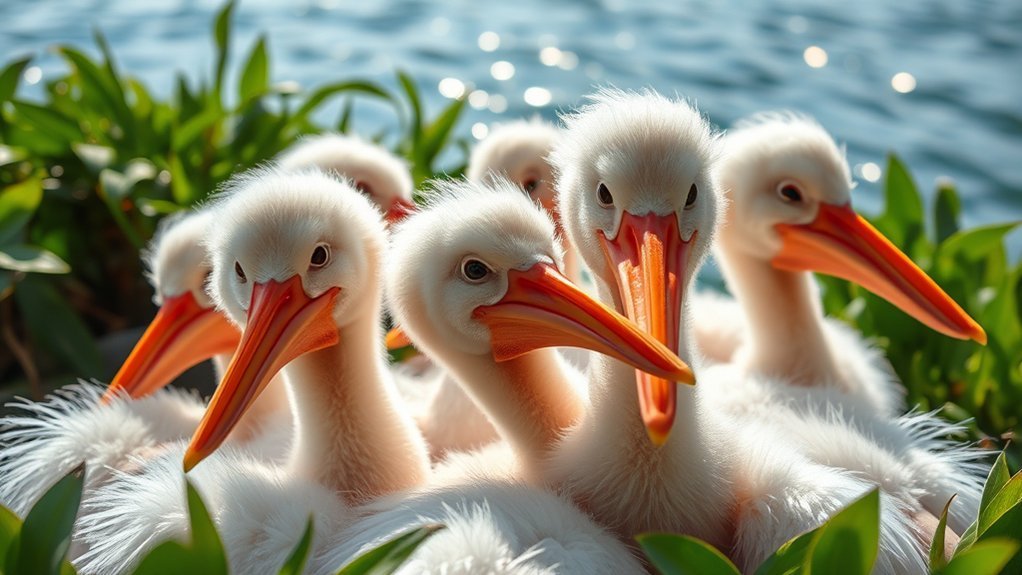
As pelican chicks get bigger and stronger, what they eat becomes very important. Their diet needs to include different kinds of fish and other food from the water. This helps them grow fast.
Adult pelicans use different ways to catch food, like diving or dipping, and young pelicans learn these tricks by watching.
Every time a young pelican catches food, it gets better at hunting and gets the nutrients it needs to be healthy. In their early life, they rely on what's around them, so a healthy environment is important.
Understanding how pelicans eat helps us see just how special these birds are and how they survive in nature.
Growth Stages of Baby Pelicans
Baby pelicans go through important growth stages to survive. The process starts when they hatch from eggs. These fragile chicks need a lot of help from their parents.
In the first few weeks, the baby pelicans grow fast. They begin to gain weight and strength. During this time, their soft down feathers start to change. Soon, they get their juvenile feathers, which help them move better and stay warm.
As the weeks go by, the baby pelicans start to grow their flight feathers. This helps prepare them for flying on their own. By about 12 weeks, you may see them trying to fly in short bursts. This marks an exciting moment in their development.
Watching these stages can help us appreciate the journey of baby pelicans as they grow up and learn to live in their environment.
Social Behavior and Nesting
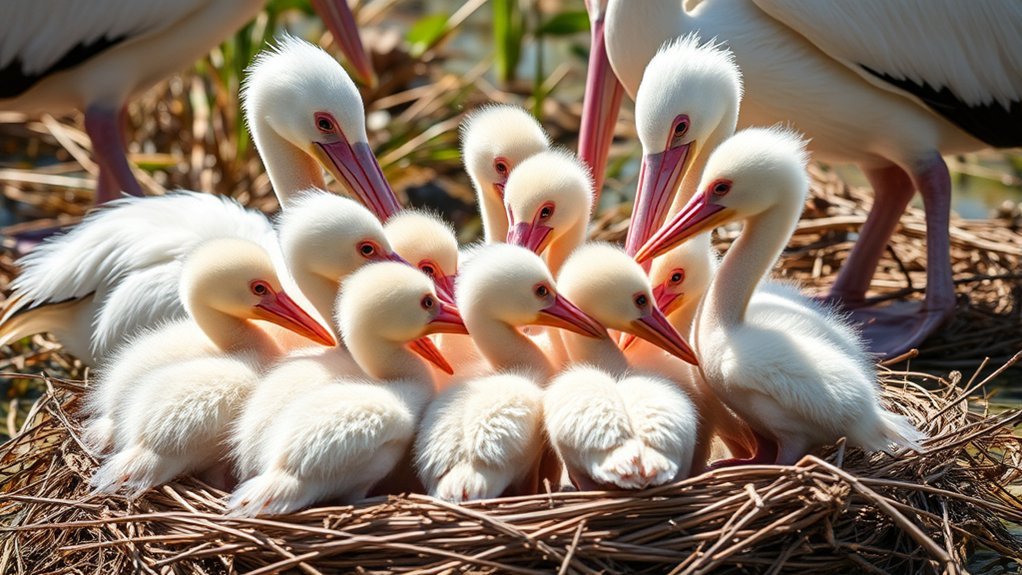
Baby pelicans are social animals. They live in groups called nesting colonies. In these colonies, they make strong friendships that help them grow. You can see them preening each other and making sounds. These actions build trust among them.
Staying close together keeps them safe from predators. It also helps them learn how to share food and work together.
As the baby pelicans grow, these social experiences teach them important skills for when they become adults. Being part of a group is good for baby pelicans. It improves their chances of surviving and thriving in their surroundings. Their social behavior is key to their development.
Survival Challenges in the Wild
Baby pelicans live in groups called colonies, which help protect them, but they still have a lot to worry about in the wild. These young birds need to learn how to stay safe from dangers like big birds that want to eat them and animals on the ground. Their parents keep a watchful eye, but threats are always nearby.
The world can be tough for baby pelicans. They face problems like losing their homes because of pollution and changes in the climate. Finding food can also become tricky, especially when there are fewer fish to catch. This means they've to compete with other animals for what little food is left.
Even when they're with other pelicans, they can sometimes feel alone. This isolation can make it harder for them to survive in nature.
Understanding these challenges helps us see how strong baby pelicans need to be to make it in the wild.
Transition to Independence
As baby pelicans grow, they start to become more independent. This change is important for their survival.
Here are some key steps they go through:
- Learning to Eat: Baby pelicans practice catching fish on their own. This helps them get better at finding food.
- Making Friends: They play and interact with other young pelicans. This teaches them how to get along and find their place in the group.
- Flying Away: When they leave the nest, they try out their wings. Learning to fly is important for them to find food later.
- Taking Care of Themselves: As they grow up, they get good at finding food and moving around on their own. This means they don't need their parents as much anymore.
Watching baby pelicans grow shows how strong they're and how well they adapt to their surroundings. Finding their place in nature is a big part of their journey.
Frequently Asked Questions
How Long Do Baby Pelicans Stay With Their Parents?
Baby pelicans need their parents for a few weeks. During this time, they learn how to find food and take care of themselves. As they get closer to being independent, they stay near their parents to get help and support while they figure things out.
What Predators Threaten Baby Pelicans in Their Natural Habitat?
Baby pelicans have to watch out for some hungry predators in their homes. Raccoons and birds of prey, like eagles and hawks, can be big threats to them. These little pelicans try to stay safe by nesting in hidden spots. However, even with good hiding places, danger is always nearby. It's a tough life for baby pelicans as they grow up in the wild.
Do Baby Pelicans Have Any Unique Vocalizations?
Yes, baby pelicans make special sounds that help them talk to each other and their parents. These unique vocalizations let them show their needs, connect with their siblings, and call out to their parents. This communication helps them feel close and part of their community.
How Do Climate Changes Affect Baby Pelican Populations?
Climate change really affects baby pelican populations. It leads to habitat loss and food shortages. As the environment changes, these young birds find it harder to locate good nesting spots. They also struggle to get enough food to grow and survive.
When their homes disappear or become unsafe, baby pelicans can become weak and vulnerable. This can hurt their chances of becoming healthy adults. It's essential for us to pay attention to these changes. Helping the environment can support baby pelican populations. Let's work together to protect these amazing birds and their homes!
Are Baby Pelicans Born With Feathers or Are They Initially Bald?
Baby pelicans are born bald. They come into the world without any feathers. As they grow, they start to develop feathers slowly. This process is influenced by where they nest and the conditions around them. These factors help baby pelicans grow strong and healthy during their early stages of life.

Luna is the passionate founder and author of Birds and You, a website dedicated to sharing her love for birds with fellow enthusiasts. Through her engaging articles and guides, she aims to educate and inspire others to explore the fascinating world of birds. When she’s not writing, you can find Luna observing birds in their natural habitats or sharing beautiful bird photography on Pinterest. Join her on this journey to celebrate and protect our feathered friends!
